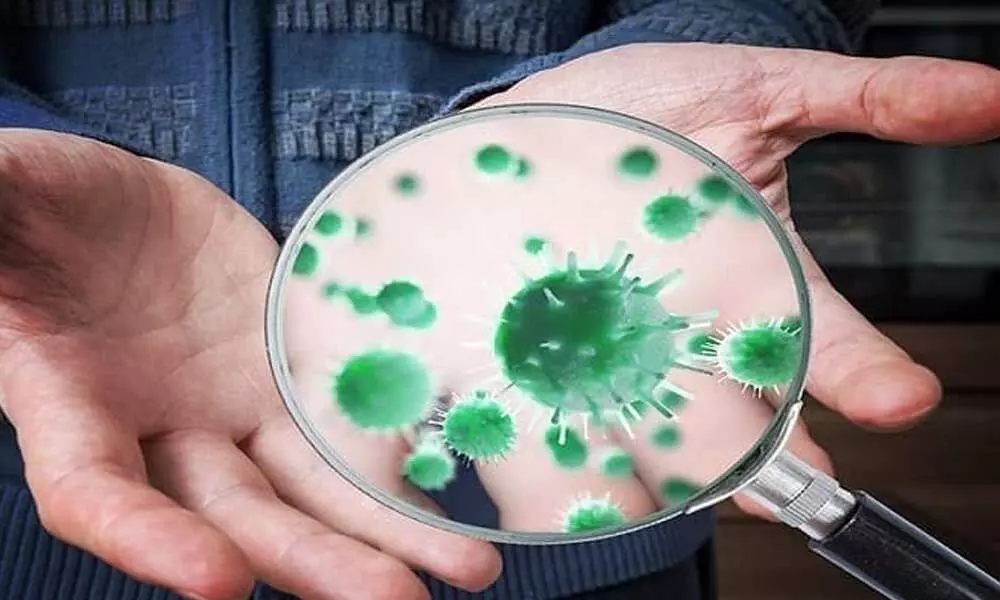Covid-19 'N protein' plays critical role in viral transmission: report

Covid-19 ‘N protein’ plays critical role in viral transmission: report
The research suggests that it is not enough to study spike protein alone to develop therapeutic drugs, antibodies, and entry inhibitors, since actual infectivity levels may vary significantly based on the presence of other viral proteins like the nucleocapsid (N) protein
Hyderabad: Researchers from the Indian Institute of Science Education and Research (IISER) Bhopal have shown that proteins from the Covid-19 virus other than the well-known 'spike protein' can play a critical role in the infectivity of the virus.
The study was led by Dr Ajit Chande, Assistant Professor, Department of Biological Sciences, IISER Bhopal. The results of this work have recently been published in the peer-reviewed journal Frontiers in Cellular and Infection Microbiology co-authored by Tarun Mishra, Sreepadmanabh M, Pavitra Ramdas, Amit Kumar Sahu, Dr Atul Kumar, and Dr Ajit Chande.
The SARS-CoV-2 virus has an RNA genome, surrounded by a sphere-shaped structure. This structure comprises various types of proteins, with one of them being the 'spike protein' that gives the virus its characteristic spiked look or 'crown'. Since the virus is highly infectious, most studies do not use the live virus, but use a similar protein capsule made up of spike that has been filled with another viral core, in a process called 'pseudotyping.'
Elaborating on his research, Dr Ajit Chande said, "Current methods of retrovirus pseudotyping are focused on the spike protein of the virus. Our study picks off from this point."
While only the spike protein is commonly used for pseudotyping when one wants to study viral entry process or the neutralizing antibody responses, the IISER Bhopal team was curious to see if including the other SARS CoV-2 proteins would influence pseudotyped virion infectivity.
This was motivated by the fact that in a real-world scenario, the spike protein does not operate in isolation, but in conjunction with other viral proteins that are engaged in various auxiliary roles during the course of infection.
The team combined a type of virus vector called the lentivirus with a COVID-19 spike protein to produce 'spike lentiviruses.' Twenty-four different SARS CoV-2 viral proteins were included in the pseudovirus ensemble, along with a fluorescent reporter to detect the infected cells.
The infectivity of each of the pseudovirus containing one of the twenty-four proteins was studied. With this, the researchers found that pseudovirus produced with the nucleocapsid (N) protein had higher infectivity than those containing other proteins.
The researchers also found that a synthetic microbody that neutralizes spike-pseudotyped viruses was less effective against the N protein-containing pseudotype. They observed similar patterns during experiments with a spike mutant that is found in the UK variant of COVID-19.
"We believe that the N-protein promotes the incorporation of the spike protein into viral particles, thereby increasing the chances for each viral particle to bind to the target cell. Our discovery opens up an exciting host of questions for related research in this area," added Dr Chande.
This important research shows that it is not enough to study the spike protein alone for developing therapeutic drugs, neutralizing antibodies, and entry inhibitors, since the actual infectivity levels may vary significantly based on the presence of core proteins like the N protein.
The IISER Bhopal team plans to carry forward these results into related arenas by exploring potential impact of the N protein on spike across different cellular contexts and also including emerging variants of the SARS CoV-2 in related studies.
Furthermore, delineating the interactions between the spike and N protein would help expand our understanding of the spread of the Covid-19 virus and its effects on various people.



















